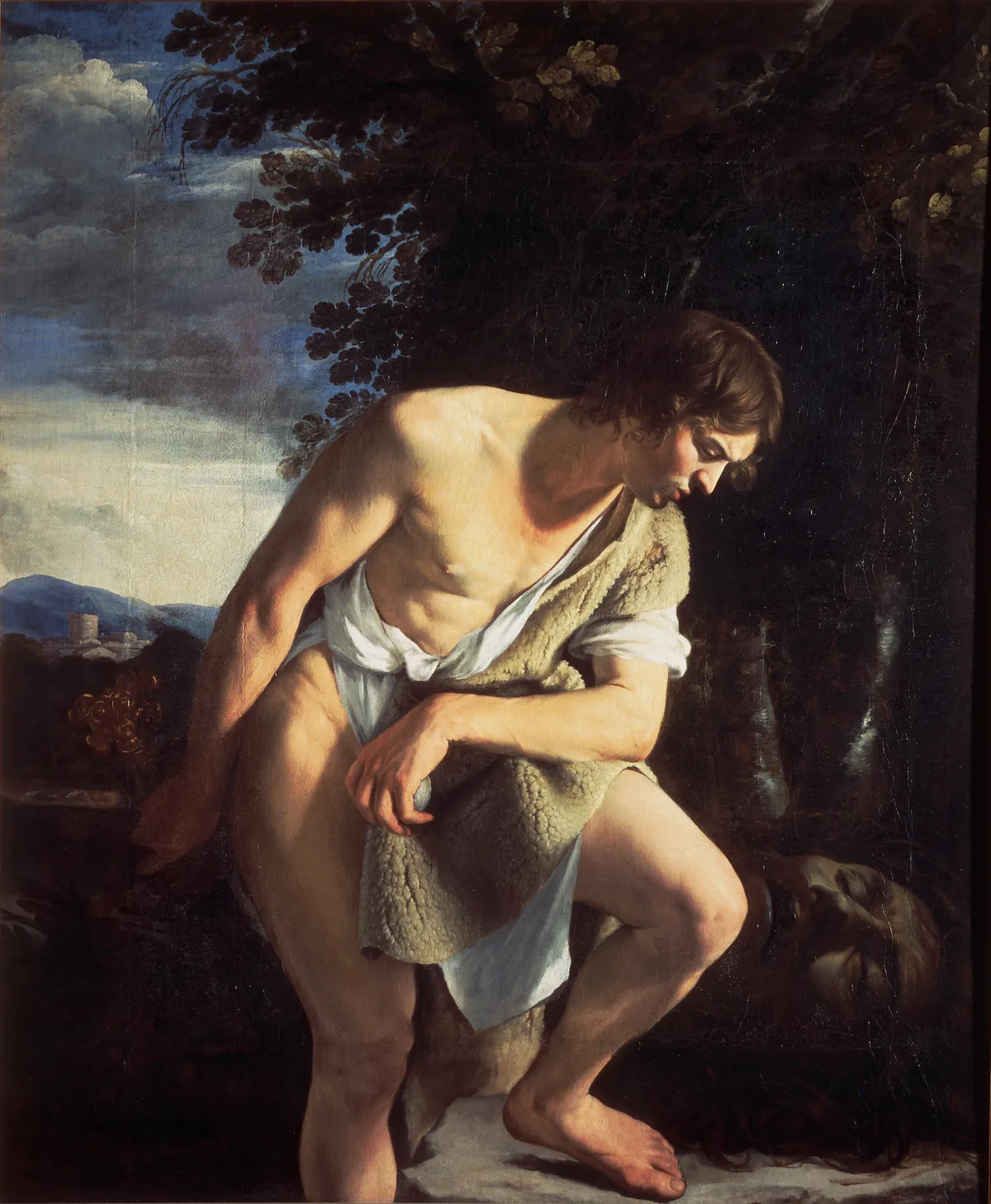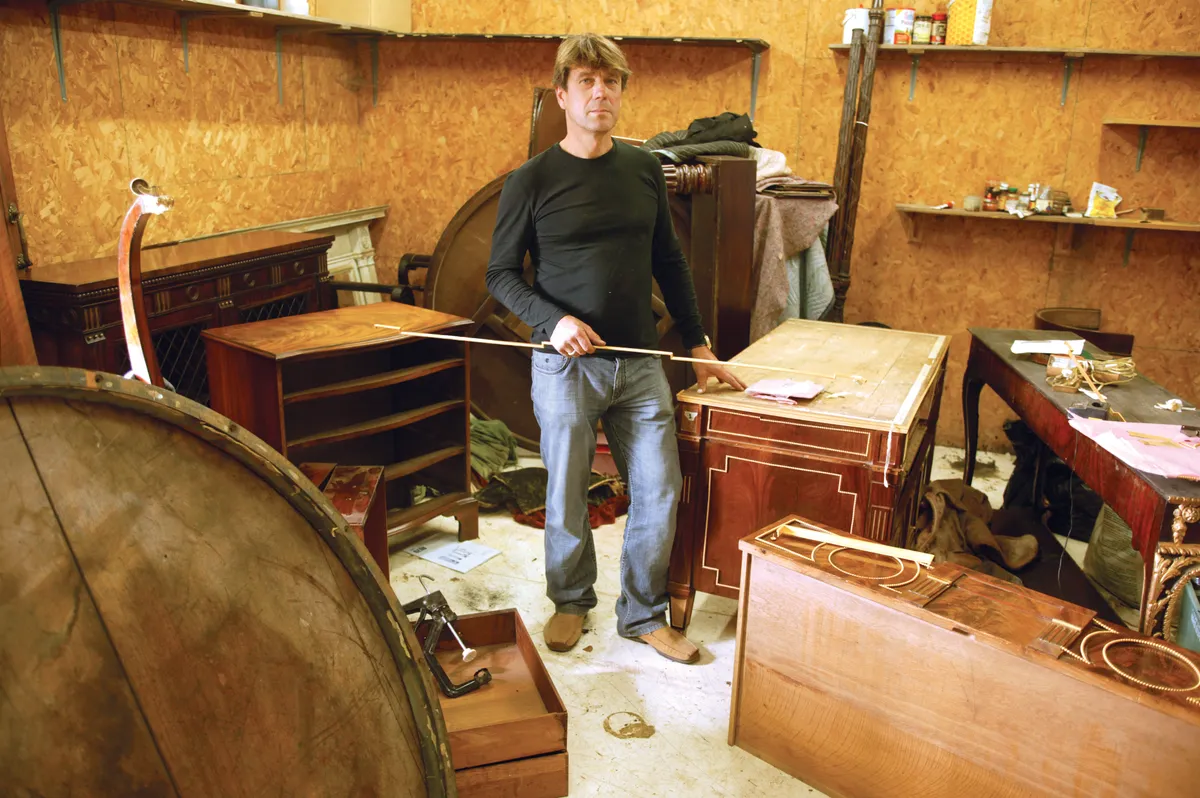History is full of chancers and cheaters! Here we reveal some of the most cunning fakes, forgeries and acts of deception in the world of art and antiques – from copied Old Masters and museum thefts, to audacious Hatton Garden jewellery heists...
1
Old Masters forgeries
Attributed to Italian artist Orazio Gentileschi (1563–1639), David Contemplating the Head of Goliathwas loaned to the National Gallery for a 2014 exhibition, but has since been linked to a string of Old Masters forgeries. French police are still investigating the appearance of a slew of fake paintings from the period, which has seen Sotheby’s reimburse two buyers, and a painting seized from a gallery in southern France.

2
An artist spurned
They say revenge is a dish best served cold, and while working as a chef in a pub in Littlehampton, failed artist William Mumford had plenty of time to stew on his rejection by the art world and cook up his counter move. Over a period of five years, Mumford produced four paintings a week, mostly in the style of Indian artists from the post-independence period – including ‘the Picasso of India’, Maqbool Fida Husain – which he recruited colleagues from the pub to sell on an online auction website and through small auction houses. He is believed to have created up to 1,000 forgeries, two of which were sold by Bonhams, before the police caught up with him and he was sent to prison for two years in 2012.
3
Thefts from Waddesdon Manor
Waddesdon Manor, a National Trust property and the home of the Rothschild family, was just one of the stately homes targeted during a three-year crime spree by the Johnson gang – dubbed ‘Britain’s number 1 crime family’ in newspaper reports. In June 2003, a collection of antique snuffboxes worth around £5m was stolen from the property in Aylesbury, Buckinghamshire. The gang went on to steal from some of Britain’s grandest homes, including Woolley Park, Berkshire, and Warneford Place, near Swindon. Despite five members of the gang being jailedfor a total of 49 years in 2008, most of what they stole, including the snuffboxes, has never resurfaced.

4
Treasures stolen from museums
Museums were the target of another gang, who staked out objects that would appeal to the Asian market. From November 2011 to April 2012, jade and rhino-horn pieces were stolen from Durham’s Oriental Museum and the Fitzwilliam Museum in Cambridge, with police believing the items could have made up to £57m on the Chinese auction market. Among the 14 men sentenced in 2016 was ‘fence’ Donald Wong, who made trips to Hong Kong to meet buyers. Many of the others were petty criminals commissioned to steal the pieces.
5
A Pilgrim Father fakery
Despite being a fake, this chair – once thought to have belonged to William Brewster, one of the ‘Pilgrim Fathers’ who arrived at Plymouth, Massachusetts, on the Mayflower in 1620 – is still on display at Michigan’s Henry Ford Museum (they decided to keep it as a reminder that things aren’t always as they seem). It may look like the original – crafted between 1630 and 1660 – but this one was made in 1969 by Rhode Island sculptor Armand LaMontagne, who wanted to teach pompous curators a lesson in humility.

6
The Chinese Rothko
It’s not only old paintings that are vulnerable to fakery. In 2016, the US Federal Court heard a case concerning the sale of counterfeits of artworks by some of America’s most famous artists – a scam that brought down one of New York’s oldest dealerships. In the case, which primarily concerned the sale of a forged work purportedly by post-war artist Mark Rothko, dealer Glafira Rosales pleaded guilty to the consignment of 40 fakes. She sold a number of these on to the Knoedler gallery who in turn sold them to clients. The Rothko painting was bought from Knoedler by Sotheby’s chairman Domenico De Sole and his wife Eleanore for $8.3m. Only, it turned out not to be by Rothko, but by a Chinese forger named Pei-Shen Qian, who also did a line in Jackson Pollocks and Willem de Koonings. When the story broke in 2011, the Knoedler gallery collapsed under a deluge of litigation.
7
Renaissance forgeries
So convincing were the fakes made by Shaun Greenhalgh in his garden shed in Bolton, they duped dealers, auction houses and even top museums. Aided by his parents (who were both in their 80s when the case came to court), Greenhalgh offered pieces for sale backed up by elaborate stories of provenance, delivered by his father as frontman. His skills were exceptional, enabling him to produce sketches by Leonardo da Vinci, paintings by Lowry and sculptures by Barbara Hepworth.In 1999, he created a headless alabaster statue of an Egyptian princess from the Amarna period that was authenticated by the British Museum and bought by Bolton Museum for £440,000. His luck ran out when mistakes were noticed on a trio of Assyrian reliefs offered to the British Museum.
8
A case of mistaken identity
It was a case that shook the antiques-dealing business to its core: in 2008, Dennis Buggins, a restorer based in Kent, claimed that a large number of the ‘antiques’ sold by his main client, the high-end London dealer John Hobbs, had, in fact, been made by him in his workshop. Buggins (pictured) said that, far from being the rare and precious items they were claimed to be in Hobbs’ descriptions, the pieces had actually been fabricated from materials plundered from old wardrobes.Among the most astonishing creations was a mahogany partner desk with a price tag of £1.2m, described by Hobbs as ‘large and important’ and made in the 19th century ‘in the manner of Marsh and Tatham’. Buggins insisted that he had designed the desk, with the labour and materials costing around £100,000. The pair reached a settlement in 2010, but Hobbs was financially ruined and his reputation destroyed. He died in 2011.

9
Isabella Stewart Gardner Museum's lost treasures
Twenty-seven years after it was robbed of 13 paintings by masters such as Vermeer, Rembrandt, Degas and Manet, Boston’s Isabella Stewart Gardner Museum has not given up hope of recovering its lost treasures. In 2017, the gallery doubled the reward for information leading to the return of the works – which includes Rembrandt’s The Storm on the Sea of Galilee (1633) – from $5m to $10m, an offer that ran out on 31st December 2017. The museum was divested of the paintings in the early hours of 18th March 1990, when two thieves posing as police officers gained entry to the museum, handcuffed the security guards to pipes in the basement and made off with the works. The robbers, who were never caught, are thought to have since died, but the fate of the paintings remains a mystery.
10
The Hatton Garden raid
And so we arrive at our last story, one of the most famous robberies in recent times: the Hatton Garden safe-deposit raid. With all the ingredients for a thrilling heist movie, it’s no surprise that the 2015 theft – in which a gang descended through a lift shaft before drilling a hole through the vault wall. The thieves stole jewellery worth £25m, but were given lenient sentences due to the fact that five of the seven were aged over 60, earning them the nickname ‘diamond wheezers’ in the tabloids.

Words: Dominique Corlett